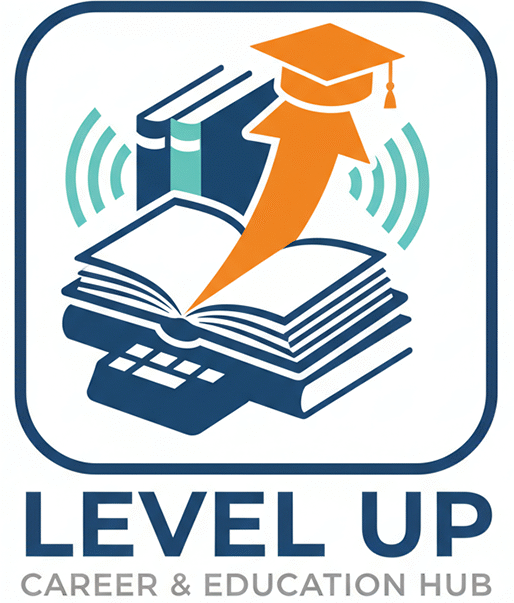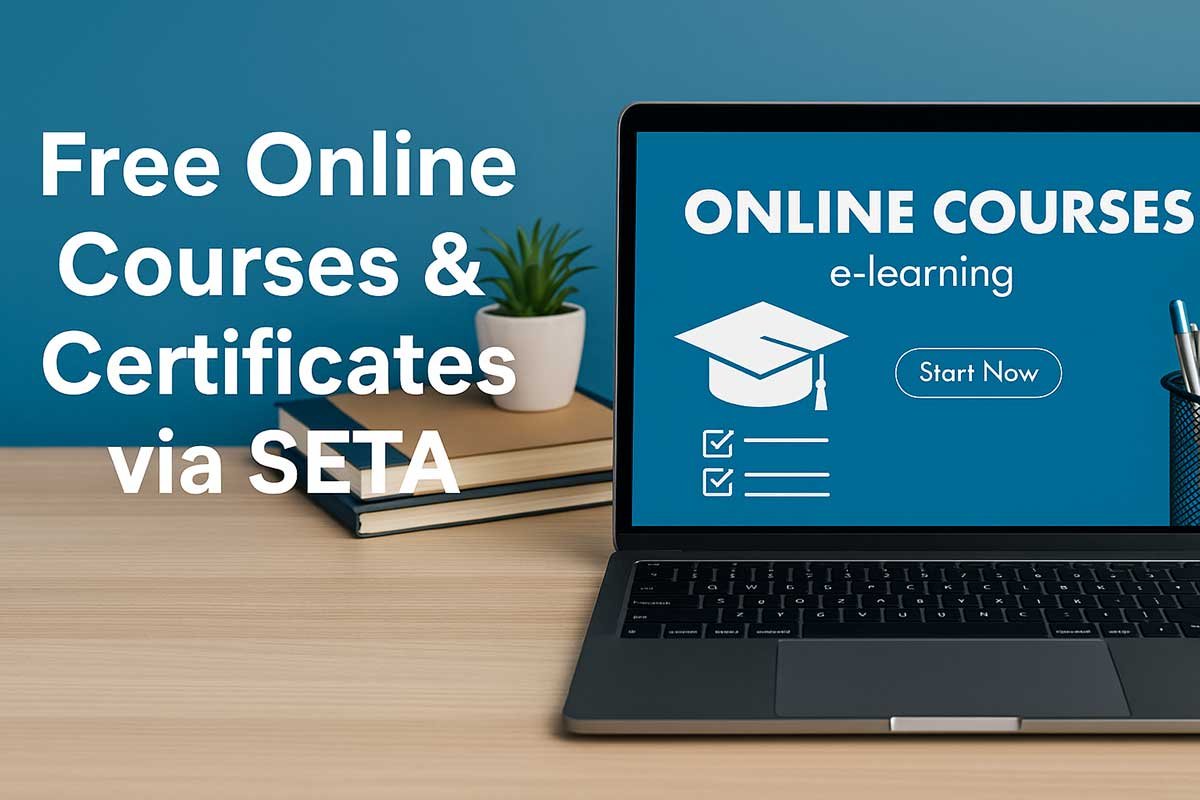In a rapidly evolving digital era, skills development is no longer a luxury — it’s a necessity. In South Africa, the Sector Education and Training Authorities (SETA) play a critical role in bridging the skills gap and equipping the workforce for current and future demands. Among SETA’s various initiatives is the offering of free online courses (often with certificates) — a powerful tool for social upliftment, employability, and lifelong learning.
This article explores what SETA’s free online courses are, how they work, key benefits, challenges, and tips for leveraging them, especially in the IT/tech space.
What Is SETA, and Why Does It Offer Free Online Courses?
SETA (Sector Education and Training Authority) is a government-mandated body in South Africa tasked with skills planning, training, and development in specific industry sectors. Its mandate includes facilitating learnerships, internships, skills programmes, and other education and training interventions.
In recent years, to address the growing digital divide and ensure access for people across geographies, SETA has expanded its offerings to include free online short courses and programmes. These aim to:
- Provide cost-free access to foundational and in-demand skills
- Reach learners regardless of their location
- Facilitate upskilling, reskilling, and employability
- Issue certificates (digital or issued) to validate learning
In 2025, SETA even launched a Free Online Courses Programme to further scale access to skills in priority sectors such as digital/IT, business, entrepreneurship, and others.
Types of Free Online Courses SETA Offers
The SETA free courses are diverse and tailored to different learner needs and sectors. Some common categories include:
| Type | Description / Example | Target Audience |
|---|---|---|
| Entrepreneurship & Small Business | Courses in entrepreneurial mindsets, cooperatives, business start-ups | Aspiring entrepreneurs, cooperatives, NPOs |
| Digital / ICT Skills | Basic computing, digital marketing, introductory coding, data literacy | Learners seeking entry into tech / digital roles |
| Business & Management | Project management essentials, business admin, supply chain, financial literacy | Mid-level professionals, learners aiming for management roles |
| Sector-Specific Skills | Industry-tailored courses for sectors SETA governs (e.g. services, tourism, banking) | Workers or job seekers within those sectors |
| Essential Workplace Skills | Foundational skills, workplace preparation, soft skills | New entrants to workforce, unemployed learners |
On the Services SETA side, for example, there are free courses such as “Cooperative Governance & Entrepreneurial Mindsets,” “Entrepreneurial Skills,” “Sustainability Course,” among others. Importantly, these are delivered via e-learning, often with data access zero-rated (no data cost to learner) in certain cases. Vuk’uzenzele
How the Free Courses Work: Process & Structure
Here’s a breakdown of how SETA’s free online course mechanism typically works:
1. Zero-Rated / Data Access (in Some Cases)
For some of the Services SETA e-learning offerings, the learning platform is “zero-rated” — meaning learners can access the course content without incurring data costs. Vuk’uzenzele This removes a major barrier in South Africa, where data cost is often prohibitive for many learners.
2. Self-Paced, Flexible Learning
Most modules are self-paced. You can consume lecture videos, reading materials, assignments and assessments on your own schedule. There is no fixed time frame in many cases.
3. Assessments & Quizzes
Courses are structured with quizzes or assessments to test comprehension and reinforce learning. Passing these is usually required to proceed or to claim the certificate.
4. Issuance of Certification
On successful completion, learners receive a certificate (often digital). The certificate serves as proof of completion or competence in that subject. In some cases, printed or more formal certificates may be available (or purchasable) depending on the course.
5. Application / Enrollment Mechanism
- Visit the SETA’s official portal (or relevant SETA website) to see the current catalogue of online courses.
- Create a learner profile / register with your personal details (ID, contact, educational background).
- Select course(s), complete any registration or eligibility steps (some courses may require minimal prerequisites such as literacy).
- Begin learning once approved or accepted.
In 2025, SETA launched a newly refreshed catalogue to align with high-demand skills and to broaden access.
Benefits & Strengths
Offering free online courses via SETA holds several strong advantages:
- Accessibility & Inclusivity: Learners in remote or underserved areas can access training without needing to physically attend classes.
- Cost-Free Access: Free to enroll eliminates financial barriers, especially important for unemployed or low-income learners.
- Industry-Relevant Skills: Because SETA works closely with sectors, the content is more aligned to real employer needs.
- Zero-Rated Option: In special cases, zero-rating ensures data cost is not a barrier.
- Credentialing: Certificates provide tangible proof of learning, which can boost job applications or career advancement.
- Flexibility: Self-paced learning allows people with jobs or other obligations to participate.
- Bridging Skills Gaps: Helps close the mismatch between skills supply and demands in sectors critical to economic growth.
Challenges & Limitations
While the initiative is commendable, some challenges remain:
| Challenge | Description |
|---|---|
| Awareness & Outreach | Many potential learners may not know about the free programmes or how to access them. |
| Quality Variation | Course quality, depth, and instructional design may vary between SETAs or providers. |
| Recognition & Value of Certificates | Not all employers or industries may regard these certificates equally; their weight depends on reputation and rigor. |
| Infrastructure & Internet Access | Some learners may still struggle with connectivity, devices, or data (unless zero-rated). |
| Completion / Dropout Rates | As with many free/self-paced courses, maintaining learner motivation and completion is a challenge. |
| Keeping Content Updated | As technology evolves, course material must be refreshed to remain relevant. |
Why It Matters for IT / Tech Learners
For individuals aiming to build or pivot into IT, digital, or tech roles, these free SETA offerings are especially valuable:
- Entry Point: Free online modules in digital marketing, computing, or data literacy provide a launchpad into deeper IT learning.
- Credential Support: Even if small, certificates from recognized programmes add legitimacy to your portfolio.
- Stacking with Other Learning: You can combine SETA modules with global MOOCs (e.g. CS50, Coursera) to build a comprehensive tech stack.
- Local Relevance: SETA courses may embed local case studies, sector contexts, or regulations, which is often missing in global courses.
- Career Transition: For workers from non-IT fields, the flexibility and low cost make it less risky to experiment and upskill.
How Learners Can Maximize Value from SETA Free Courses
To get the most out of these opportunities, here are some actionable tips:
- Pick Courses Strategically — Focus on areas where there is demand (e.g., data literacy, digital marketing, basic programming).
- Create a Learning Schedule — Even with self-paced courses, set fixed times weekly to avoid procrastination.
- Build a Portfolio / Projects — Translate what you learn into small projects (website, dashboard, automation) to showcase to employers.
- Showcase Your Certificates — Add them to your CV, LinkedIn, or personal site, with context on what you learned.
- Engage & Network — Join discussion forums, connect with peers, or find local study groups to boost accountability.
- Stack Learning — Use SETA courses as stepping stones; follow up with specialized global courses or certifications.
- Keep Up with Announcements — SETA course catalogues change; monitor their websites and news pages.
- Verify Relevance — Before enrolling, check course syllabus, content recency, and what kind of certificate is issued.
Example: Services SETA Entrepreneurship & Zero-Rated Learning
One illustrative case is Services SETA’s offering of free entrepreneurship-oriented e-learning courses. These include modules for cooperatives, start-ups, nonprofit organizations, and entrepreneurial mindsets.
- These courses are delivered online and self-paced.
- For many participants, no mobile data is required (zero-rated).
- On completion and passing assessments, learners receive certificates.
- This is a practical model that mitigates both geographic and financial barriers to entry.
Looking Ahead: The Future of SETA’s Free Online Courses
To stay effective in the coming years, SETA (and its partner providers) may consider:
- Expanding digital and 4IR content (AI, cloud computing, cybersecurity)
- Hybrid models where online learning is paired with local in-person practical labs
- Stronger credentialing / microcredentials that carry real weight in industry
- Adaptive learning & modular pathways that tailor the content to learner’s pace and background
- Better support & coaching to reduce dropout rates — mentors, community facilitation
- Partnerships with industry for internships or employer recognition of certificates
Conclusion
In a country facing high unemployment, structural inequalities, and rapid technological change, initiatives like SETA’s free online courses with certificates are essential. They provide a low-barrier, flexible gateway for learners to gain in-demand skills, validate their learning, and increase their employability.
For IT and digital learners in particular, these programmes offer a valuable foundation — especially when paired with further study, projects, and credential stacking. The keys to success are consistency, strategic selection, and turning learning into demonstrable outcomes.




